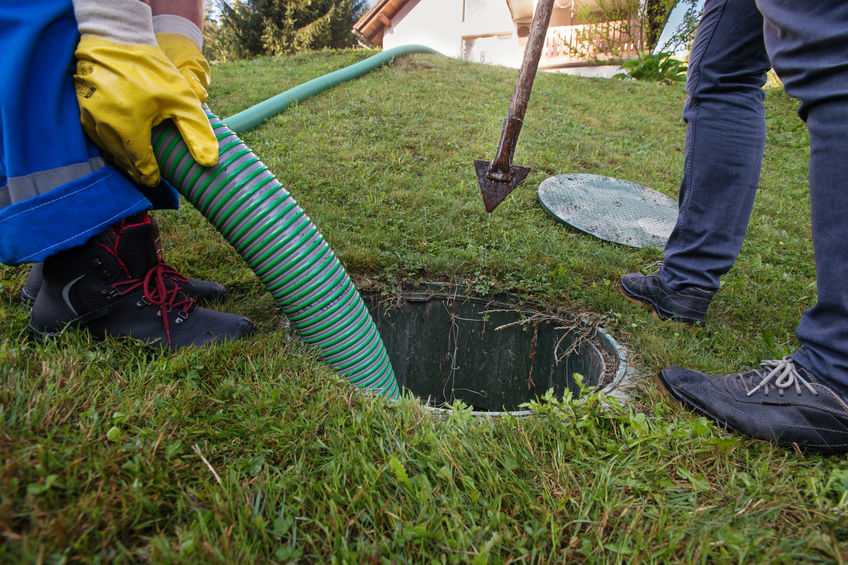Myth #1: Septic Tanks Take Care of Themselves.
It is recommended to have a septic tank pumped every 3-4 years. This can vary based on tank size and home occupancy. This is the most recognized and economical way to get maximum performance from your septic system.
With biological processes and gravity, septic systems and tanks do a lot of the work with little intervention. While you may not need to take direct action to keep your system healthy, good habits and regular maintenance will give your system the best chance at a long life.
Myth #2: You can put just about anything down the drain.
This is false. A septic tank relies on a balance of biological microbes and enzymes that break down the waste that goes in it. There are agents such as drain cleaner, disinfectants and solvents that will diminish or eliminate the microbes that digest sewage, increasing the risk of system failure.
For example, one cup of household bleach can kill all beneficial microbes in a 1,000 gallon septic tank. These microbes will eventually re-establish themselves, but not until some sewage goes undigested. Believe it or not another thing to avoid is coffee grounds. They don’t readily digest and can get into your leaching bed, where they can contribute to system failure. Ideally there are only two things that can safely be put into a septic system: waste water and sewage.
Myth #3: Additives reduce the need for pumping
There are products that are offered as solutions to keep septic systems healthy and functional. Some even say that using them will eliminate the need for pumping. The claim is that by adding “secret” microbes and enzymes to the system they can increase sewage digestion and eliminate the need for pumping. However, the claims cannot be substantiated in every case and leaves a lot of factors unaccounted.
Well-balanced septic tanks do not require any help. If your tank is unbalanced, the solutions are septic pumping, and proper maintenance. It is a better and more sure use of money to invest in pumping every 3-4 years than to trust additives that may not work for your system.
Myth #4 Building over a septic tank is acceptable if it is not “permanent”
Any structure built or placed over the tank or drain field can lead to many issues with your system. The most common and costly being accessibility during pumping. If your tank cannot be serviced easily, it will require higher costs to pump and typically the removal or destruction of whatever was built upon it. The drain field in particular should remain open and able to get sufficient oxygen through the ground to maintain a healthy balance within the system, saving you time and money in the future.
Myth #5: Septic tanks must be replaced after 20 years.
Many septic systems keep working perfectly after two decades of service. The systems that last the longest are those that are well maintained and minimize waste that cannot be processed. Septic system working life has much more to do with management than it does with some arbitrary lifespan expectation. Keeping the system pumped and clear of growing tree roots and debris will allow your system the longest life possible.
Myth #6: A clogged system cannot be repaired.
Many clogged septic systems can be restored with maintenance, so replacement is not always necessary. In some cases clogs can require jetting, which involves installing access ports on the ends of the inlet lines so you can give them an internal pressure-wash to clear them out. There’s no reason that a septic system can’t function for many years if, in addition to pumping, the inlet lines are jetted internally from time to time.
Myth #7 : You must pump the tank when it is full
Fact: A properly working septic tank will always be full of water. The solids are the reason to have your tank pumped on a regular schedule. Once pumped, a tank will typically be full within 4 to 7 days.
Myth #8 : Do not pump the system, just repair as needed.
Fact: It is an investment to have your septic tank pumped every few years. However, having your septic tank pumped is still more financially beneficial than having it repaired. If you consider the cost of repairs being multiple thousands of dollars and the time involved, regular maintenance ranging from 400.00-600.00 depending on your system is well worth the effort and peace of mind it brings.
Myth #9: Yeast will eliminate the need to pump your system.
It is a common misconception that yeast is good for septic tanks. Yeast contains biological organisms that can cause more things to build up inside of your septic tank rather than break down the waste.
Myth #10 Septic systems must be “seeded”
Seeding is the understanding that by adding organic material to your system you can aid or help the process work. Some ideas include; flushing a pound of yeast, manure, worms and others. Septic systems only require human waste to get started.

